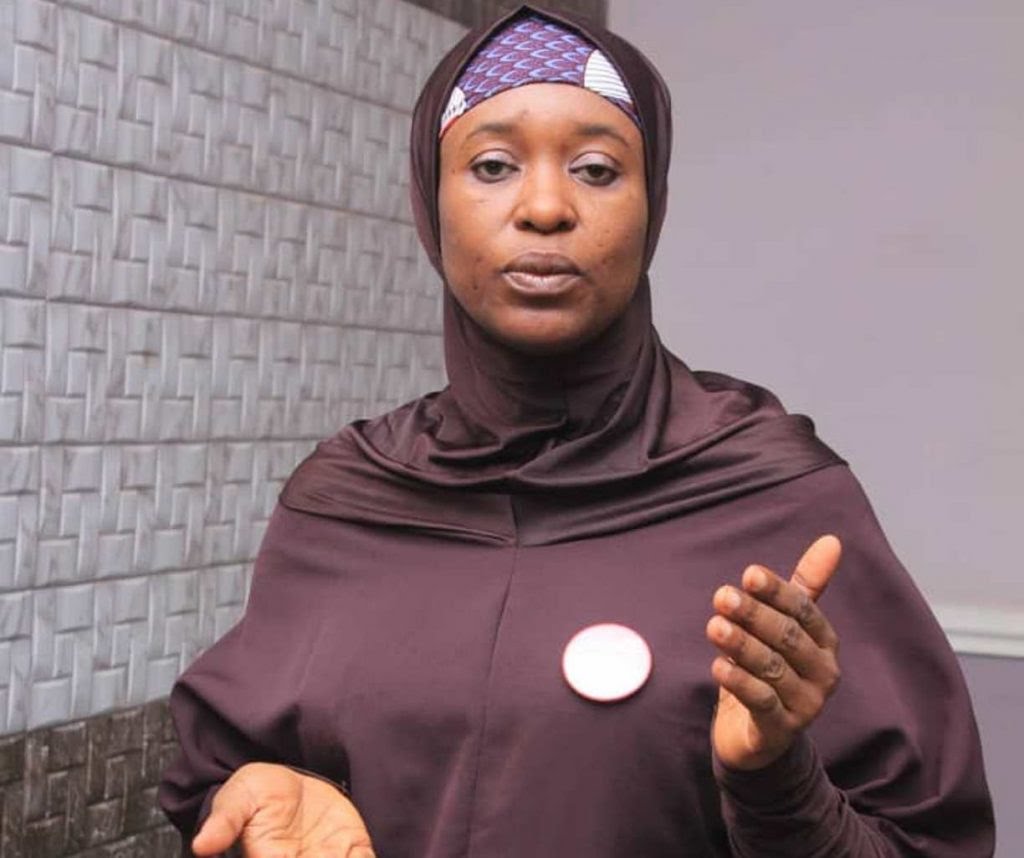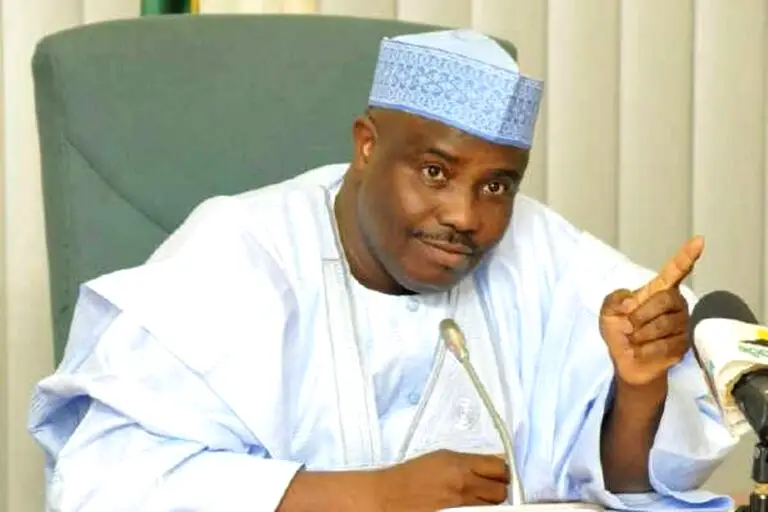[ad_1]
Constitution of the Federal Republic of Nigeria, 1999 (as Amended), sections 4 (1) & (2):
(1) “The legislative powers of the Federal Republic of Nigeria shall be vested in a National Assembly for the Federation which shall consist of a Senate and a House of Representatives.
(2) The National Assembly shall have power to make laws for the peace, order and good government of the Federation or any part thereof with respect to any matter included in the Exclusive Legislative List set out in Part 1 of the Second Schedule to this Constitution.”
The Constitution established the Legislature as the First Arm of government, because law is needed to define all other aspects of human existence. It is thus expected that through the powers granted to it under the Constitution, the legislature will work to enact good laws for the good of Nigeria. The most important of these laws is of course the Constitution of the Federal Republic of Nigeria, 1999 as amended. There has been lots of hue and cry over the nature and effect of this document on our nationhood. Thus, over the years, virtually every legislative arm has attempted to amend the document as a way of placating the people of Nigeria whose input was not sought or obtained by the military before it was forced down on them. Section 9 of the said Constitution deals with the detailed procedure for the amendment of the Constitution. It is rather cumbersome and laborious. Let me dwell on the process of amendment of the Constitution a little more in detail as adopted from Policy and Legal Advocacy Centre, with minor modifications, in paragraphs 1 to 9 hereunder.
- Proposed amendment to the Constitution usually comes by way of Bills, which originate either from the Executive or a Member of the National Assembly as a Private Member Bill. While Executive Bills are initiated by the President, the Chief Justice of Nigeria or other Government officials, Private Member’s Bills are initiated by interest groups and sponsored by members of either the Senate or the House of Representatives. The procedure for this presentation is to submit it to the President of the Senate or Speaker of the House of Representatives as the case may be and sent to their respective Rules and Business Committees for scheduling on the Order Papers for an introduction into the Houses.
- The National Assembly may organise a public hearing and other consultations on the bill. At this stage, Bills are not only critically examined by the Committee but by identified stakeholders of the public who are often required to make written submissions of their views through a Memorandum to propose further amendments where necessary. The Committee is at liberty to develop new amendment proposals based on received submissions and outside of those committed to it.
- The amendment proposals are presented as one Constitution Amendment Bill or as several Bills touching on different subject matters in a report to plenary. The 8th Assembly for instance, adopted a piecemeal approach where constitutional amendment proposals were brought as separate bills rather than a single Constitutional Amendment Bill. This was done to avoid the 7th Assembly’s experience with presenting multiple proposals in a single amendment bill, which were all jettisoned when the President refused to sign the bill. If the report and bill(s) as presented is adopted at this stage, it progresses to Third Reading. Before the Bill progresses to Third Reading, every member of the legislature votes either in support or against each specific item in the Bill. Here, the proposals to the Constitution are often presented in the form of a clause. A two third majority of all the members of each House is needed for each clause to be deemed as passed except where the proposal borders on the creation of new states, boundary adjustments, new local government areas, fundamental rights and on the mode for altering the Constitution. In such cases, a four-fifth majority is needed.
- The Votes are then collated and counted, usually after electronic voting. The reason for this is two fold. Firstly, it is to ensure that the total number of Senators or House of Representatives Members in attendance are not below the minimum number required to pass a proposed clause. Secondly, this is to ensure that any proposal that is passed meets the stipulated requirement of an approval by a two-third majority. Once two-thirds of the total number of Senators or Members voting in each chamber is achieved in any of the proposals of the Committee, the process moves to the next stage.
- If an amendment occurs at either of the Houses on the bill or each House passes the bill with differences, a Conference Committee will be set up to harmonise the differences. This is because the two chambers are required to pass every bill, including constitution amendment bills in identical format. If both Houses are not able to harmonise positions, the Bill will be returned to the respective chambers of the National Assembly for fresh voting. Two-thirds of the numerical strength of each House will still be required to pass it at this stage. This would mean a minimum of seventy-two Senators and two hundred and forty Members of the House adopting an identical bill for transmission to the States. Where the bill is however adopted or passed in identical format by the two chambers i.e. without amendments, there would be no need for a conference or harmonization as described above as it is deemed that they have passed a single uniform bill. The bill is then transmitted to the State Houses of Assembly by the Clerk of the National Assembly for their concurrence.
- A simple majority vote of members in 24 States will be required for each amendment to be approved. This is usually in the form of a YES or NO vote. Note: In practice, State Assemblies have been known to “step down” or “defer” a bill they are unable to decide on instead of voting “No.” This still does not translate to a “Yes” vote.
- When two-thirds of the States approve each clause by simple majority, returns are then made to the National Assembly after which it is adopted (usually in a ceremony) by the National Assembly before its transmittal to the President for assent. The Clerk of the National Assembly is expected to attach the Votes and Proceedings of the National Assembly and the State Houses of Assembly to show that the amendments meet the constitutional requirement for passage.
- Note that some legislative experts argue that once the States approve the amendments, they should automatically come into effect as the Constitution does not expressly prescribe the requirement of the President’s Assent for constitution amendment bills. Further, in a Federal system, when the States have ratified an amendment, it should be seen as the final and authoritative will of the people. This is the system adopted by the U.S. where the President has no formal role in constitution amendment. Others argue that the bill should obtain the President’s Assent as Acts of Parliament require Presidential assent (see section 58 of the Constitution) and is a way of reinforcing checks and balances between the two government arms. If the process is defeated at any stage, it will end any further step and will have to start afresh.
- The end of the Assembly of every legislative house breaks the cycle of the amendment process. Therefore, the Constitution amendment process cannot go beyond the fixed period stipulated for any given Assembly nor deliberations on the amendments continue at the convening of a new Assembly.
ALSO READ FROM NIGERIAN TRIBUNE
Since its emergence, the 9th National Assembly has been seen as a weeping institution, a clearing house and a reporting Chamber, where elected representatives of the people stoop to beg directors of parastatals to attend public hearings, at times issuing empty threats without any follow-up action. It was in the 9th Assembly that legislators approved over N300B for an agency (NDDC) without a functioning Board (repeatedly since 2015), where sole administrators illegally appointed into office turned the hallowed Chambers into some Nollywood movie scene through executive epilepsy, displaying fainting spells shamelessly with scant regard for public decency. And not long thereafter, the Minister of Niger Delta openly accused the legislators of corruption whereupon they then scampered like chickens, chorusing “off the mic”, to bury the emerging scandal. It is the same National Assembly that could not accept the challenge of the Minister of State for Labour, Festus Keyamo, SAN for an open debate on allegations of corrupt practices.
Without any doubt, one of the greatest challenges of the present National Assembly has been the amendment of the Constitution. As things are presently, no can confirm the stage of that process, beyond the snippets that get to us from the news media. This is a process that cannot be toyed with so it will be necessary for the National Assembly to fast track the amendment procedure to ensure that public funds expended on it is not wasted. Given the analysis by PLAC as enumerated above, it will be too disastrous if this process is not concluded before the 2023 elections or the expiration of the life of the 9th Assembly. The burden on the legislature on constitutional amendment should be discharged to the satisfaction of Nigerians.
[ad_2]






